

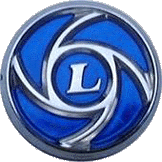
 |
 |
|||||||
© 2025 |
Technical Article: Cylinder Head RemovalGlenn Merrell writes:There are currently three "safe" methods to remove stuck cylinder heads on a Triumph Stag V8 Engine: 1. A head removing plate, this atttaches to the top of your head, has 5 long fine thred bolts that push down on the head studs, gently lifting the cylinder head. Very effective, very safe, does not damage anything. Head extractor plates for the TR7 will work with a bit of alignment and modification, but the plate and hardware cost about $225 from Moss plus shipping. This is probably by far the easiest method: 2. Dual hydraulic rams. We will publish an article on this soon. This method uses two plates bolted to the intake ports of the cylinder heads. These plates hold one end of a hydraulic ram. The rams are pressurized evenly pushing the heads off the studs. Usually the studs bend if you push the heads too far, the heads get some minor marking on them, but from reviews to now, this seems to be an effective method. Sometimes one head will push off and the other will not, then you have to stop, secure the opposite head and push again. Not commercially available as a kit, you need to make this from scratch and locate two hydrayulic rams. You will probably spend $300 or more getting this together. However if you do not have the coin to shell out for such fancy tools and custom cutting and welding of half inch steel plate, you can always use the old reliable ... #3. The " Rope Method" : Preface: The intent of using this method is to remove a stuck cylinder head. Suspending the vehicle on the engine pulling tabs will only stress other components; wedges will trash the cylinder head beyond repair; and the head pulling bracket may not work in all occurrences. The rope method is as old as cylinder heads on internal combustion engines. Some mechanic trying to remove an old flat head probably perfected it. All I did here is document it for your use. I have used this method on several engines, one with all five studs seized, and in all cases, the heads lifted about +1 inch, enough room to jab saw the studs up close to the head. Also in all cases, no connecting rods were bent. Depending on the reason you are removing the heads, it would be wise to pull the tappet buckets and pallets to see if any valves are bent. If so, expect to find a broken valve in the cylinder, and do not crank the engine without a length of rope in the cylinder. Otherwise, the valve piece will imbed itself into the soft aluminum once for each rotation, and most likely trash your head. Do not bother trying to soak the studs, the penetrant never goes more than 1/2 inch past the surface, no matter what the claim of the penetrant. But, if it makes you feel good, go ahead and spray away, the runoff will help loosen the grease cake on the side of the engine. Also, DO NOT attempt to weld anything onto the broken off stud(s), it will only damage the bolting washer surface which needs to be perpendicular to the stud axis. It would be a good idea to view Tony Hart's timing chain video first, available from Tony Hart, the SOC, or Rimmers. Tony does not stock US formats of the video. Materials needed:a lot of patience, but hell, you have tried every method known to man already, so push on; normal automotive hand tools; gear puller; a stud extractor/vice grips with GOOD jaws; 8 to 12 feet of 3/8" braided nylon rope; a working starter; a charged battery; a battery charger; spray lube oil/penetrant like WD40 or equivalent; long thin screwdriver or 1/4 inch wooden dowel; a remote hand start button (not necessary, but keeps you from running back and forth to the ignition key); a hand jab saw...I do not recommend using a power saw, as you can severely damage your head beyond repair. A little patience and elbow grease using a hand jab saw and good quality blade, renewing the blade as necessary, will save you the grief from realizing that you went through all this trouble just to trash a head. A jab saw is a hack saw/metal saw with no holder on one end of the blade; a 1/4 inch drift pin, or tapered drift pin; a 10 pound hand mallet; about 4 hours of patience and labor; a sauna or hot tub, several pints of your favorite brew (for use afterwards) Initial Procedure: (basically, remove everything from the engine) pull fuses for the fuel pump, and all electrical accessories drain radiator and engine block remove intake manifold, power steering pump, A/C bracket, radiator, fan, torquatrol; Turn crank to TDC #2, remove harmonic balancer using a gear puller; remove timing chain cover, timing chains, mark crankshaft and jack shaft positions on the block, remove cams, spark plugs; remove all cylinder head studs and nuts that can be removed; disconnect hoses and electrical connections from rear of cylinder heads; replace the harmonic balancer onto the crankshaft, without the center bolt; spray a penetrant oil into each cylinder, hand cranking the engine as necessary to get the cylinder bores lubricated-if you have an air hammer, it would be a good idea to air hammer the studs, as this helps break them free from the cylinder head. Overview:The basic idea using this method is to use the power of the starter to move the piston at velocity, compressing the nylon rope against the cylinder head. Not to worry, combustion explosion in the cylinder exceeds 2000 psi. This compression, when repeated several dozen times, will break the stud free enough to lift the cylinder head about one inch. The sequence to be followed is open to the user, but I have found it best to start with the front cylinder and work my way back until I see how the head is lifting. If some studs are giving you a particularly hard time, concentrate on the cylinders on either side of the stuck studs. RESIST ALL TEMPTATIONS TO USE A PRY BAR AND WEDGES. Removal Procedure:with one hand, place the long screwdriver or dowel into the spark plug hole of the stuck head; rotate the crank counter clockwise (CCW) with the other hand until the piston is at the bottom of its stroke, using the dowel as an indicator; remove the screwdriver and carefully feed the nylon rope into the cylinder through the spark plug hole, leaving a loop exposed to remove the rope...DO NOT INSERT ALL OF THE ROPE INTO THE CYLINDER, AS YOU MAY NOT BE ABLE TO RETRIEVE IT!!!; rotate the crank by hand to compress the rope in the opposite direction (CCW) from the normal rotation. Tick over the engine using the starter. RELEASE THE KEY/REMOTE BUTTON AS SOON AS THE crankshaft STOPS ROTATION, OR YOU WILL BURN OUT YOUR STARTER. The engine rotation sill stop with a dull thud. The starter is not strong enough to push the head up with normal rotation. It needs the counter rotation to bet enough momentum to strike the head with the rope in the cylinder Rotate the crankshaft CCW in the full opposite direction by hand to compress the rope in the opposite rotation: tick over the engine using the starter, again releasing as soon as the crankshaft stops rotation; rotate the crankshaft CCW to the bottom of its stroke, feed in more rope if necessary (you will know if it is necessary if the engine cranks several full rotations); rotate the crankshaft CCW by hand to compress the rope in the opposite direction; tick over the engine using the starter, again releasing as soon as the crankshaft stops its rotation: REPEAT steps 5-9 until you see some movement of the cylinder head, which may be 10-20 times, then; rotate the crank CCW to loosen the rope, remove the rope from the cylinder, move to the next cylinder, start at step #1; when the head has lifted to a distance of about one inch, move the cylinder head gasket up against the bottom of the cylinder head. This is to insulate the head from the jab saw; carefully, jab saw the stud as close as possible to the head, being careful not to contact the head;. This will give you a one inch stud to grab with a stud extractor or vice grips. The fun part...support the cylinder head on some wood blocks; drive the head studs out of the head with the drift pin and 10 pound mallet (ohhh..yes, this feels soo good, wear some good gloves and goggles) repeat for second cylinder head go sit in the sauna, drink a beer. Regards, Glenn Merrell Posted on Sunday, November 20 @ 15:00:13 CST |
6/7/2025   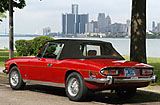 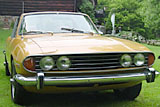 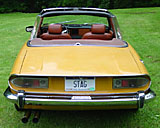 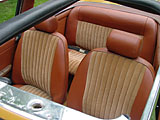 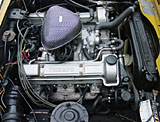 | ||||||